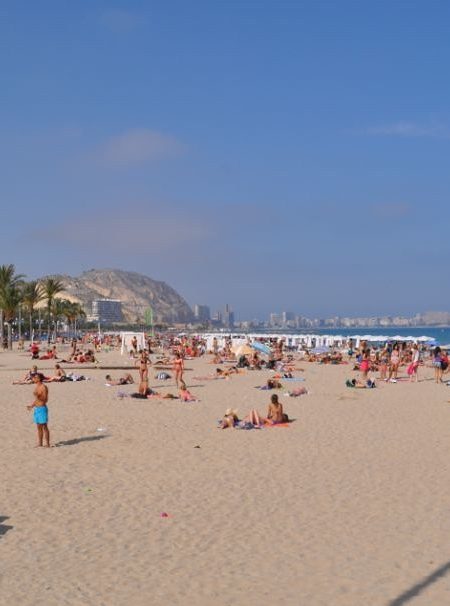Aena is experiencing difficulties in the contracting procedure for the Alicante-Elche Miguel Hernández Airport, which is anticipated to be its most significant investment in the past decade.. Pavasal, a Valencian company, has been awarded the contract to construct the taxiway widening at the provincial airport by the state airport operator. This decision was made after Pavasal defeated three other companies that were still in the running for the project in the final phase of the bidding process: Abaldo, Conelsan, and Obrascón Huarte.
The competition’s resolution, which was initiated over a year ago (the call was formally published in June 2024), was postponed as a result of the project’s failure to clear the environmental assessment process, which was mandatory due to the airfield site’s proximity to the Aguamarga wetland. And, as this newspaper was able to verify, it was ultimately cleared at the end of July after passing that filter. Once the contract signing formalities are finalised and the rudimentary preparations are finalised, the works are anticipated to commence within four to five months, or approximately in the spring of 2026, according to Aena sources.
The reality is that this is a significant undertaking. The tender amount of over 16.7 million euros (16,746,400 euros) for which its contract is being awarded (the tender began with a budget of 21,145,795.48 euros) already provides a preliminary indication of its significance. However, the qualitative relevance of this new taxiway surpasses its quantitative value, as it will simplify aircraft operations on the ground by offering new route options for their journeys to the departure runway or for their positioning adjacent to the terminal following landing.
Ultimately, the construction of this taxiway is intended to enhance the organisation of these transfers, thereby enabling optimised time in flight management, in addition to providing alternatives in the event of incidents on the current taxiway. Consequently, this will create new slots that can be offered to airlines that are interested in organising additional departures on their current connections or, where applicable, with the launch of new routes. Therefore, it is anticipated that its implementation will facilitate an expansion of airport operations, which have reached historic highs after surpassing two million travellers this July and adding a cumulative total of over 11.31 million passengers through July, a 9.5% increase from the same period last year. At that time, Miguel Hernández Airport concluded the year with a record 18.4 million passengers, which was 16% higher than the figure for 2023.
The terminal’s prospective expansion
Nevertheless, the anticipated favourable outcome of the construction of this new taxiway, which is a potential increase in operations, will not be evaluated until at least 2028. Since the works must be compatible with the aerodrome’s operation, the tender for the contracting of its works anticipates a 27-month completion period (more than two years). Consequently, the specifications themselves determined that its development should be prioritised during periods of reduced aeronautical activity to reduce the impact on operations.
Additionally, the undertaking comprises numerous enhancements. To be more precise, the drainage system will be renovated, and the expanded surface for the new taxiway will be paved. Additionally, beacons and new mega-light towers will be installed. The renovation and extension of the airport perimeter fence and road, as well as the extension of the existing FOD (Foreign Object Damage) barrier to the expanded area, are also included in the project.
Its completion complements other investments that Aena has contracted at Miguel Hernández Airport in the past year, including the provision of an Airport Management Centre (AMC) that is responsible for coordinating the operation of all areas of the airport and resolving potential incidents in real time. Additionally, the expansion of ten boarding gates to facilitate simultaneous double boarding (through the front and rear doors), the renovation of the air conditioning system at the aircraft access walkways, and the installation of a photovoltaic plant on the roofs of the car park canopies are all part of this project.
A total of over 11.3 million euros has been agreed upon for this series of projects, which are partially already underway. The 16.4 million euros that are slated for the construction of the new taxiway will now be added to this total. Nevertheless, the primary investment that Aena intends to make in the Miguel Hernández terminal is still being assessed. This entails the development of a project to design the expansion of the present terminal, which is based on the demolition of Terminal 1 (currently closed and disused). The objective is to increase the passenger processing capacity to a minimum of 26 million passengers annually, as indicated by preliminary estimates that have been released.

The analysis of the proposals submitted by seven international architectural firms is currently underway, according to sources at Aena. Prior to the decision on the award, queries are being resolved and information is being provided. The competition’s budget, which encompassed taxes, was €24,048,750. At the time, the entire execution period was 60 months, with the expectation that the work would be completed in stages. The Ministry of Transport has yet to officially confirm the total budget, but the progressive delivery of these partial projects should enable the introduction of the corresponding competitions for the contracting of their works.









No Comment! Be the first one.